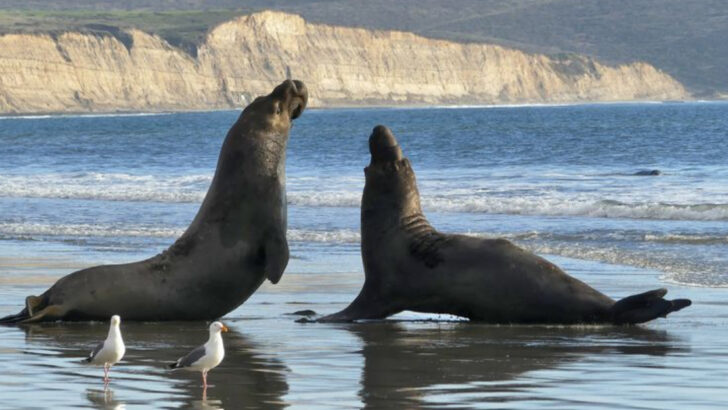They’re not extinct. They’re just hiding in plain sight. Long before humans walked the Earth, enormous beasts ruled the land, skies, and seas. And while many vanished with the dinosaurs, a few shockingly massive creatures never left. They’re not fossils—they’re alive, breathing, and still dominating their corners of the world. From giant salamanders lurking in rivers to massive birds that resemble prehistoric relics, these ancient survivors are the closest thing we have to living time machines. Most people walk right past them, unaware of their ancient lineage. These aren’t just animals. They’re echoes of a forgotten age—and they’re still with us. Meet the nine giants that time forgot.
Komodo Dragon
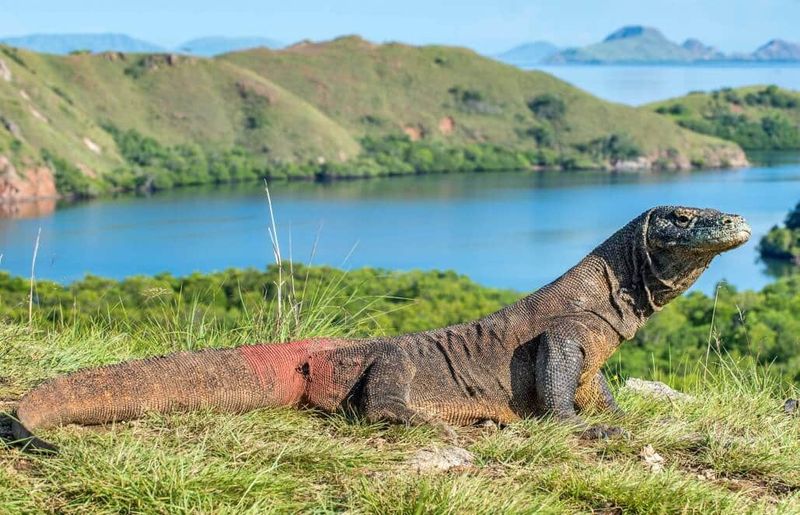
The Komodo Dragon, known for its mythical name, is the largest living lizard on Earth. Found on Indonesia’s Lesser Sunda Islands, this ancient reptile can reach up to 10 feet in length. Its formidable presence and hunting prowess make it a true apex predator. Despite its fearsome reputation, the Komodo Dragon is a fascinating creature, with a keen sense of smell that can detect carrion from miles away.
These dragons have thrived for millions of years, adapting to their harsh environment. They rely on camouflage and patience to ambush prey, an impressive testament to their evolutionary success.
Their saliva, teeming with bacteria, helps them take down even large animals, ensuring their place as dominant predators in their habitat. Truly, the Komodo Dragon is a relic from another time, still commanding respect in the modern world.
Giant Tortoise
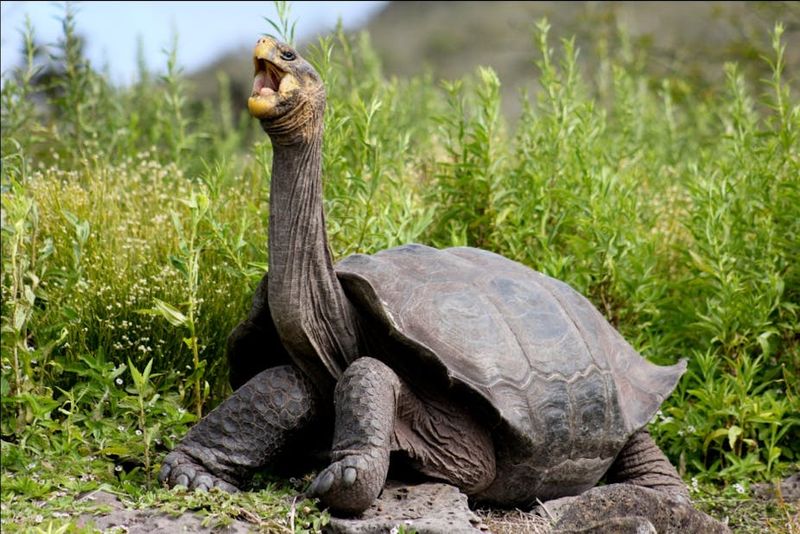
With a lifespan that can exceed 150 years, the Giant Tortoise is a symbol of longevity and resilience. These colossal reptiles, found in the Galápagos and Seychelles, are among the most ancient creatures on Earth. Their slow, deliberate movements reflect a life unhurried by time.
Interestingly, each island in the Galápagos houses tortoises with unique shell shapes, a testament to their adaptability and the diverse environments they inhabit.
These gentle giants play a crucial role in their ecosystems by dispersing seeds and maintaining vegetation balance. Witnessing a Giant Tortoise in its natural habitat is like peering into the past.
Japanese Spider Crab
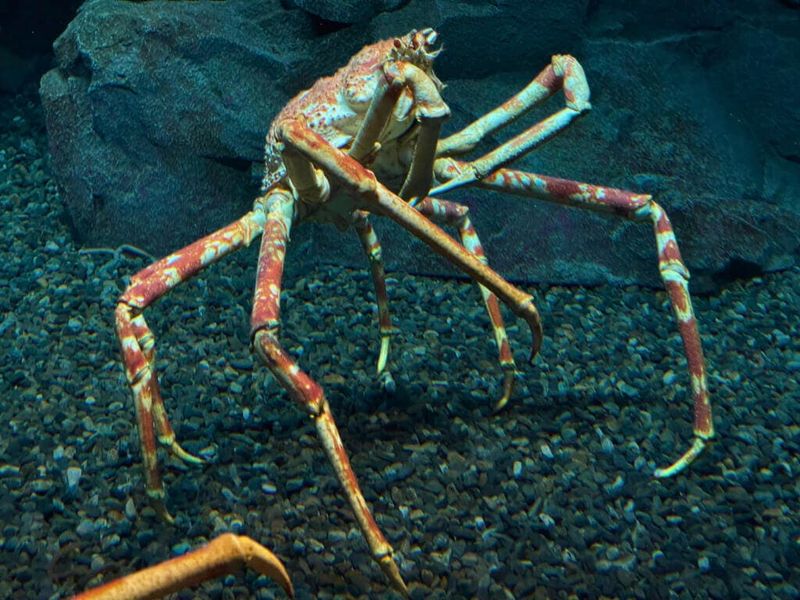
In the depths of the Pacific Ocean, the Japanese Spider Crab reigns with its incredible leg span of up to 12 feet. Despite its intimidating appearance, this crustacean is more curious than aggressive. Found in the waters around Japan, it is a marvel of the marine world.
Its long, spindly legs allow it to traverse the ocean floor with ease, searching for food among the undersea currents.
The Japanese Spider Crab is a living relic of the deep, showcasing the wonders of evolution and adaptation. It is a reminder of the mysteries that still lie beneath the ocean’s surface.
Arapaima
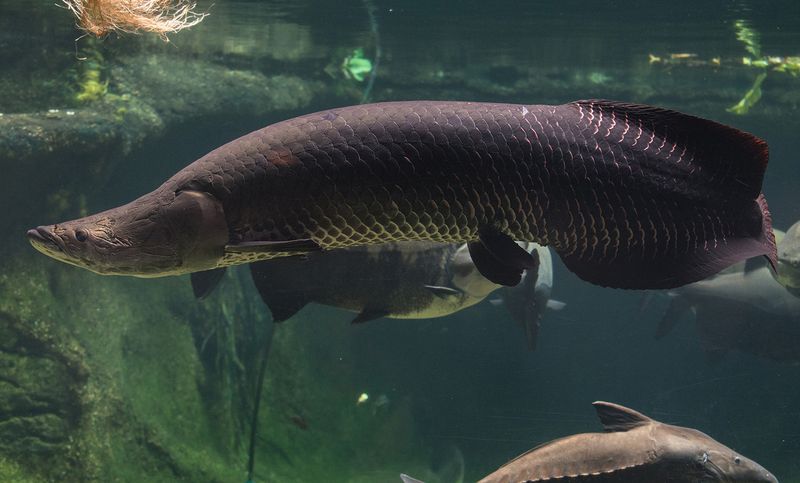
The Arapaima, one of the world’s largest freshwater fish, roams the waters of the Amazon Basin. Known for its impressive size, reaching up to 10 feet in length, this giant is a master of adaptation. Its ability to breathe air allows it to thrive in oxygen-poor waters.
The Arapaima’s diet of fish and small animals reflects its top position in the aquatic food chain.
With its sleek, torpedo-shaped body and vibrant scales, the Arapaima is a stunning sight. This ancient fish has survived for millennia, a testament to its resilience and the rich biodiversity of the Amazon.
Cassowary
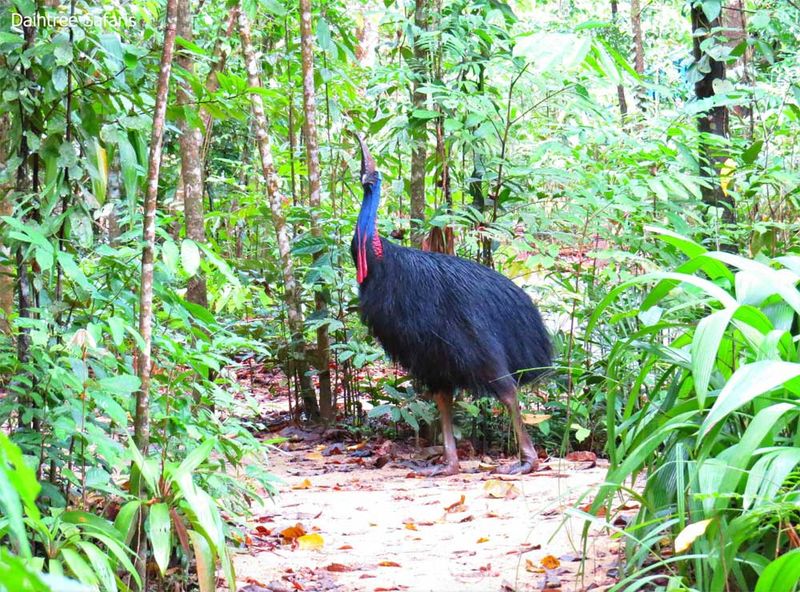
With its bright blue skin and helmet-like casque, the Cassowary is one of the most striking birds on Earth. Native to the rainforests of New Guinea and Northern Australia, this flightless bird is a formidable presence. It can run at speeds up to 31 miles per hour and jump over five feet.
The Cassowary’s diet of fruit and small animals makes it a crucial seed disperser in its habitat.
Despite its solitary nature, the Cassowary’s role in maintaining rainforest biodiversity is vital. This ancient bird is both a symbol of primal beauty and ecological importance.
Sturgeon
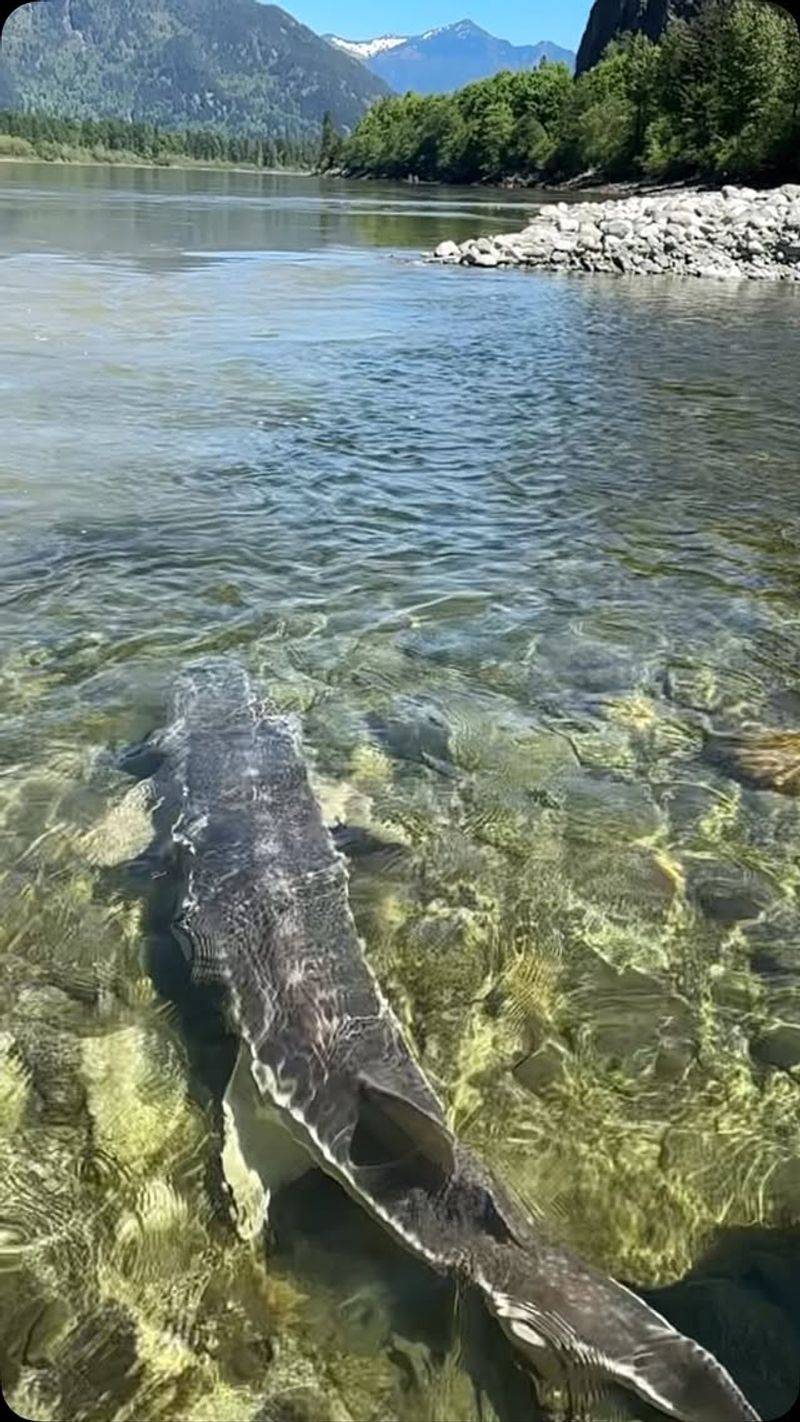
The Sturgeon, with a lineage dating back over 200 million years, is a living fossil of the aquatic world. Found in rivers and lakes across the Northern Hemisphere, this fish’s prehistoric appearance is unmistakable. Its bony plates and elongated body evoke images of a distant past.
Not only is the Sturgeon prized for its caviar, but its presence is also a key indicator of freshwater health.
Despite facing threats from overfishing and habitat loss, conservation efforts are helping to preserve this ancient giant. The Sturgeon’s continued existence is a testament to nature’s enduring legacy.
Platypus
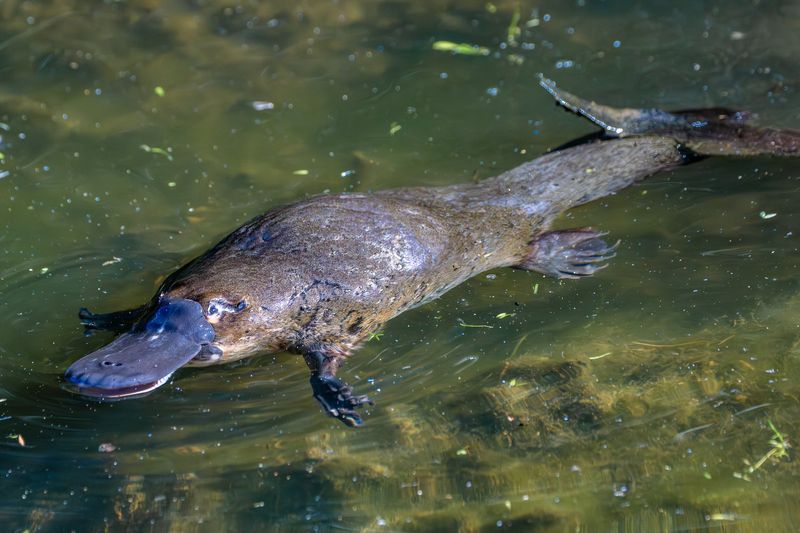
The Platypus defies categorization with its unique blend of features. As one of the few egg-laying mammals, it has puzzled scientists for centuries. Found in the waterways of Eastern Australia, this animal’s duck-like bill and webbed feet are perfectly adapted to its semiaquatic lifestyle.
The Platypus uses electroreception to hunt for prey, a skill that speaks to its remarkable evolutionary path.
With its playful demeanor and quirky appearance, the Platypus is a beloved symbol of Australia’s diverse wildlife. It continues to captivate those who encounter it, standing as a testament to nature’s creativity.
Elephant Seal
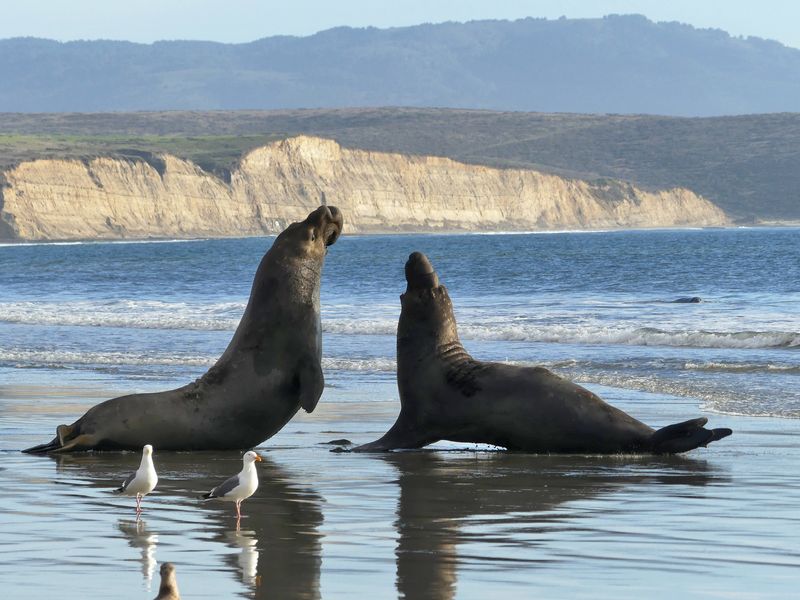
Elephant Seals, named for their trunk-like noses, are among the largest pinnipeds on Earth. Found on the coasts of the North Pacific and the Southern Hemisphere, these marine mammals are renowned for their incredible diving abilities. They can dive to depths of over 5,000 feet in search of squid and fish.
During the breeding season, males compete fiercely for territory and mates, their vocalizations echoing across the beaches.
Despite their size, Elephant Seals are agile in water, showcasing a surprising grace. Their presence highlights the rich marine life that thrives along remote coastlines.
Siberian Tiger

The Siberian Tiger, also known as the Amur Tiger, is the largest of the big cats. Roaming the forests of Russia’s Far East, this apex predator is a symbol of strength and resilience. Its thick fur and padded paws are perfectly adapted for the harsh, cold environment.
These tigers are solitary hunters, preying on deer, wild boar, and occasionally even bears.
Despite facing significant threats from poaching and habitat destruction, conservation efforts have helped stabilize their population. The Siberian Tiger remains an awe-inspiring reminder of the wild’s untamed beauty.

